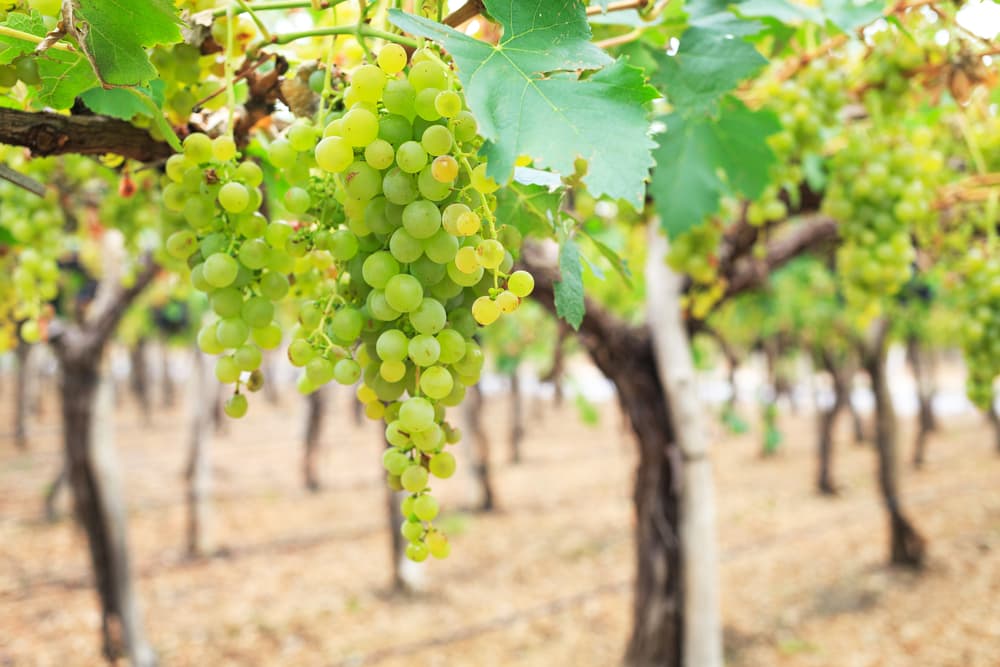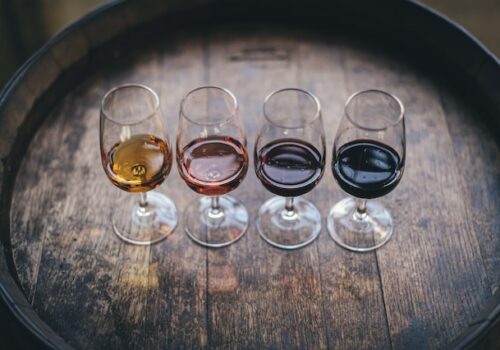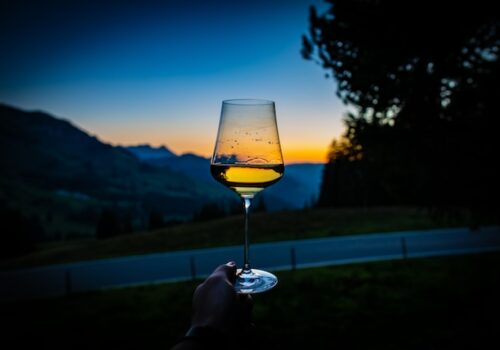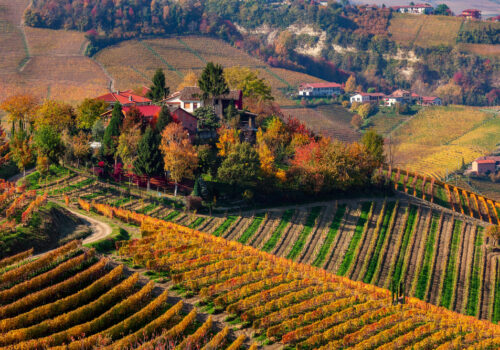The Art and Science of Winemaking in Northern Vineyards
Introduction to Winemaking in Northern Vineyards
Winemaking is a craft and art form that has been around for centuries. It combines science, experience, and skill to turn fruits from the vineyard into delicious wines. In northern vineyards, the process goes back even further, with winemaking traditions passed down for generations.
In the early years, winemaking in northern vineyards was considered a hobby for hobbyists, with the viticulture skills of local people used to produce simple, traditional wines. While those habits have continued throughout the years, over time the process has evolved and become more complex. Winemakers have developed new techniques and tools to ensure a high quality product.
Today’s winemakers are dedicated to maintaining the traditions of the past while adapting to the ever-evolving technology of the present. They understand that winemaking is a delicate balance between the art and science of producing wine – one which demands respect and attention.
This guide will provide an introduction to winemaking in northern vineyards, discussing its history, development, and importance. We’ll also explore the climate, soil, and grape varietals used, as well as the different techniques, tools, and regulations that help make winemaking such an intricate and rewarding craft.
Few words about art and science Internal Assessment
The Internal Assessment is a critical component of the International Baccalaureate program, and it provides students with an opportunity to demonstrate their understanding of the relationship between art and science. The IA requires students to conduct an independent research project, which involves gathering, analyzing, and interpreting data related to a particular topic within the scope of art and science.
The IA can take many forms, such as a written essay, a performance, a multimedia presentation, or a laboratory experiment. Regardless of the format, the IA requires students to apply the scientific method and critical thinking skills to a particular art-related question or problem.
To write a successful IA on the topic of art and science, students must have a thorough understanding of the relationship between these two fields and the different ways in which they intersect. They must also be able to conduct research, analyze data, and present their findings in a clear and concise manner.
At IB IA Writing Service, we offer specialized support to help students write a successful IA on the topic of art and science. Our team of experienced writers and researchers has extensive knowledge of the IB program and can provide students with the guidance and resources they need to excel in their IA.
Climate and Soil Requirements for Winemaking in Northern Vineyards
Understanding the climate and soil needed to successfully make wine in Northern Vineyards is essential for producing quality wines. There are several factors that determine the best climate and soil conditions for winemaking.
The most important factor is temperature. Winemakers need to maintain a consistent temperature range of around 10-22°C for optimum grape ripening. Too high or too low may lead to the spoilage of the grapes.
In terms of soil, ideal winemaking soils consist of well-drained, organic-rich, loam soild with a pH level between 6 and 8. Loam soils are made up of sand, silt, and clay, which makes them able to hold on to moisture and provide plants with nutrients.
Another important factor is sunshine. Grapes require hours of sun everyday in order to ripen and produce sugars. The amount of sunshine will result in the grape variety, concentration of aroma and taste, alcohol content, and acidity of the wine.
Finally, wineries in Northern Vineyards must also consider rainfall and wind. Too much rainfall can damage the vines and reduce grape yields, while too little may cause the grapes to dry and drop off the vine prematurely. Wind helps to dry the vines and can help prevent mildew and disease.
By understanding the climate and soil requirements for winemaking in Northern Vineyards, winemakers are provided a good foundation to produce quality wines.
Grape Varietals in Northern Vineyards
When it comes to winemaking, grape varietals are an important factor. Grapes are the essential ingredient of any wine and the flavor and character of each bottle can be determined by the type of grapes used. In Northern Vineyards, some of the most commonly used varietals include Chardonnay, Pinot Noir, Merlot, Cabernet Sauvignon, and Syrah.
Chardonnay is the most popular White Wine. It’s often described as fruity with a hint of oak. It’s widely grown in Northern Vineyards and produces medium-bodied wines that are well balanced with acidity and flavor.
Pinot Noir is a red grape varietal. It’s light-bodied and earthy in flavor with dark fruit flavors such as cherry and raspberry. Northern vineyards produce Pinot Noirs that are delicate and highly aromatic.
Merlot is another red varietal and when produced in Northern Vineyards, it often has soft tannins, medium body, and a deep color. Its flavors include blackberry and plum, and it has a smooth finish with a hint of spice.
Cabernet Sauvignon is a full-bodied red varietal with strong tannins and complex flavor profiles. When grown in the region, it often has black currant and cedar notes, making it a very robust and dry wine.
Finally, Syrah is a dark-skinned grape varietal producing peppery and spicy wines. Its flavor profile adds complexity and depth to any wine and its tannins bring structure. It’s a great addition to any blend and is often used in Northern vineyards.
Each of these varietals offer different characteristics and can be blended together to create unique and flavorful wines. The art and science of winemaking in Northern Vineyards is all about finding the perfect balance of varietals to produce the desired end result.
Overview of Winemaking Process in Northern Vineyards
Winemaking has been deeply embedded in the culture and tradition of northern vineyards for centuries. From Italy to California, winemaking has evolved to reflect the changes in climate and soil, allowing for the production of wines that capture the character of their local terroir.
The winemaking process begins with a selection and harvesting process. Before grapes are harvested, winemakers must carefully assess the ripeness of the fruit to ensure the resulting wine has the desired level of acidity and sugar. Grapes that have reached the ideal degree of maturation are then picked by hand and brought to the press house.
Once at the press house, winemakers use a variety of processes and techniques to extract the juice from the grapes. One of the earliest methods is called ‘treading’, which involves crushing the grapes with one’s feet in a large container. Modern winemaking techniques such as pneumatic presses and mesh filters are also used to separate the juice from the solids.
The juice is then transferred to fermentation tanks, where it undergoes a slow transformation into wine. This is the longest step in the process and can take up to several months. During fermentation, the wine is monitored and adjusted to meet the winemaker’s specific goals for taste and quality.
After fermentation, the wine is aged in barrels and bottles to create its desired flavor profile. This final step also allows for the development of tannins and other compounds that can enhance the flavor of the wine. The aging process may last anywhere from months to years, depending on the style of wine and the desired result.
Winemaking in Northern Vineyards is an intricate craft that requires knowledge, skill, and time. By understanding the unique features of the region and applying modern techniques, winemakers can craft wines that are distinctive and complex, capturing the essence of this beautiful land.
Highlighting Winemaking Traditions in Northern Vineyards
Northern Vineyards have a long, rich history of winemaking. For centuries, viticulture has been an integral part of the culture and a source of sustenance for the local population. As such, it also developed several unique winemaking traditions passed down through the generations.
One tradition popular in the area is the practice of blending grapes to make a unique, balanced wine. Local winemakers combine different varieties of grapes to create wines with a unique complexity, aroma, flavor and finish. This can involve combining varieties that are harvested at slightly different times or those that have different characteristics.
Another tradition in the region is the use of oak barrels to age the wine. Using barrels of different sizes, shapes and types of wood, local winemakers are able to impart more depth, complexity and depth to their wines. The process takes several years and requires skill and patience.
Finally, Northern Vineyards also have a tradition of careful cellaring. Wine made in the region is often aged in bottles for months or even years before being released to the market. This allows the wine to reach its full potential, resulting in a better quality product.
These winemaking traditions are not only part of the local culture and identity, but are also a major part of what makes the region’s wines so special. By utilizing the knowledge and experience of generations of winemakers, Northern Vineyards have created unique, exquisite wines that are enjoyed throughout the world.
Examining the Special Qualities of Northern Wines
Northern Vineyards produce remarkable wines with unique characteristics that set them apart from wines made in other regions. While winemaking is a combination of science and art, variations in climate, geography, and soil make each region’s wine unique. The special qualities of Northern wines can be broken down into their taste, aroma, and color.
Taste
The flavor of Northern wines is typically described as mellow, balanced, and harmonious. These wines also tend to have a nice body and mouthfeel, which means they are pleasantly full-bodied and smooth on the palate. The sweetness or dryness of the wine depends on the sugar content and whether residual sugar is present.
Aroma
The aroma of Northern wine usually contains an array of fruity, floral, and herbal notes. Common scents include apples, pears, peaches, and other stone fruit, as well as hints of herbs such as thyme and rosemary. Wines from the region contain a variety of secondary aromas including vanilla, cinnamon, and baking spices.
Color
The color of Northern wines can vary greatly depending on the grape varietal used in the winemaking process. Popular white wines tend to be pale yellow or light green, while red wines typically range from deep ruby to purplish hues. Rosé wines are light pink to salmon colored.
By understanding the unique characteristics of Northern wines, you can better choose which style of wine is best suited to your individual tastes. Whether you enjoy a bold, full-bodied red or a subtle and light white, Northern Vineyards offer a range of award-winning wines that are sure to please.
Reviewing the Impact of Modern Winemaking Techniques on Wines
Winemaking is an ancient art, but new developments and innovations have had a huge impact on modern winemaking. Many vineyards in Northern Vineyards have embraced modern techniques to produce high quality wines.
The most common modern technique is ‘cold soaking’, which involves chilling and soaking the crushed grapes for several hours before fermentation begins. This method helps to extract the flavors and aromas from the skins into the juice, leading to a fuller bodied, more intensely flavored wine.
Another important modern technique is ‘dynamic extraction’, which involves pumping hot or cold liquids over the grapes during fermentation to extract more flavor and color. This is done by circulating carbon dioxide, nitrogen and other gases around the inside of the tanks.
Other techniques include oak aging, micro-oxygenation, and fining. Oak aging can add complexity and structure to wines, while micro-oxygenation increases the oxidation process to concentrate flavors and soften structured tannins. Fining involves adding substances to eliminate cloudiness and remove suspended particles.
Modern winemaking techniques help to create distinctive and flavorful wines with increased complexity, brightness and aging potential. Many winemakers believe that these techniques are the key to creating memorable wines that stand out in a competitive market.
Tools and Methods of Winemaking
Winemaking is an intricate process that has been perfected over centuries. It requires the right combination of elements and techniques to get the perfect bottle of wine. As such, winemakers must use a variety of tools and methods throughout the winemaking process.
- Harvesting: Harvesting grapes is the first step in winemaking, and it’s usually done by hand or machine. Hand harvesting ensures that only the best ripe grapes are selected, while machine harvesting allows for a more consistent harvest.
- Pressing: After the grapes are harvested, they are placed in a press which extracts the juice and the skins. Different presses can be used depending on the desired outcome; for example, a bladder press achieves a softer extraction, while a basket press yields a fuller-bodied end product.
- Fermentation: Fermentation is the process by which sugar is turned into alcohol. This is done with the help of yeast, which consume the sugar and convert it into alcohol, carbon dioxide, and other byproducts. The temperature of the fermentation is carefully regulated to ensure the proper outcome.
- Barrel Aging: Once fermentation is complete, the wine is placed in barrels to age. Different types of wood will impart different flavors and aromas to the wines, so care is taken to choose the right barrel for the right wine.
- Fining: During this stage, sediment is removed from the wine, resulting in a clearer liquid. Several fining agents are used, including egg whites, gelatin, clay, and bentonite. They act to attract and remove particles from the wine.
- Blending: Blending is the art of combining different wines to achieve the desired flavor profile. Red wines are blended to produce a complex flavor, while whites are blended to balance acidity and sweetness.
These are just a few of the many tools and methods used in winemaking, but they serve to demonstrate the complexity of the art and science. Each step requires careful consideration to ensure that the end product is as good as possible.
Exploring Labor Practices of Local Wineries
Wineries rely on people to craft delicious wines from the grapes they cultivate. To ensure their workforce is the best it can be, they often have specific practices in place regarding labor. In Northern Vineyards, these practices are very important, as they are crucial for producing great wines.
At smaller wineries, there is often a lot of manual labor involved in winemaking. Workers may be responsible for harvesting the grapes, hand-picking waxing and capping each bottle, and even at times labelling and packaging. This type of work requires physical strength, endurance, and attention to detail – all of which can be found in local residents.
In larger wineries, there is typically more mechanized labor. Machines are used to crush, press, and ferment the grapes, and automated systems allow for more efficient bottling. However, there is still a need for human help throughout the process, from monitoring the machines to making sure the end product is suitable for sale.
Regardless of the size of the winery, there is usually a strong focus on quality control. Each bottle produced must meet a certain standard before it can be sold, so workers must be able to identify imperfections quickly and accurately. The winery also relies on its workforce to operate in an efficient manner in order to maximize profits.
Finally, most local wineries take care to ensure that employees are well taken care of. Winemaking is a physically demanding job, but many wineries provide lunchtime meals, breaks, and other amenities to make sure their workers are comfortable and productive. It is a sign of good business sense, as well as respect for the people who work hard to produce the wines.
Overall, winemaking in Northern Vineyards benefits from having a well-trained and experienced workforce. By understanding and implementing the appropriate labor practices, wineries can ensure that each bottle of wine they produce meets the highest possible standards.
Outline regulations and resources available to winemakers in the region
Winemaking is a craft that has been passed down through generations, but it is also regulated by law in most regions. In Northern Vineyards, there are several regulations in place for winemakers that are designed to ensure quality and safety of their wines. It is important for winemakers in this region to stay up-to-date on the latest regulations and resources so they can continue creating high-quality wines.
The first step for winemakers in Northern Vineyards is to secure the necessary licenses. To do this, they must first register with the local government agency that oversees wine production. This registration process requires the completion of paperwork and payment of a fee. Once the registration is complete, winemakers need to obtain a license from the Wine Association of Northern Vineyards. This license will authorize them to produce and sell wine within the region.
In addition to obtaining the necessary licenses, winemakers in Northern Vineyards also need to be familiar with other resources and regulations that apply to their industry. This includes pertinent regulations from the federal and state governments, as well as any local ordinances that may exist. It is important to stay updated on these laws, as changes can occur quickly and without notice.
In addition to legal requirements, winemakers in Northern Vineyards also need to become knowledgeable about their region’s climate and soil conditions. Knowing these two factors can make it easier for winemakers to select the ideal grape varietals for their products. There are also resources available to help winemakers select the best equipment, tools, and methods for their particular wine style.
Finally, winemakers in Northern Vineyards should take advantage of any available marketing or promotional opportunities. Investing in proper advertisement and marketing can be beneficial in terms of increasing consumer interest in their wines. Additionally, many wineries offer educational classes and tastings, which can be great ways to build brand recognition and attract new consumers.
Overall, winemaking in Northern Vineyards requires knowledge of the regulations and resources available in the region. Familiarity with these various aspects makes it possible for winemakers to produce and market high-quality wines that encapsulate the unique flavors and character of the region.
Marketing & Growing Consumer Interest in Northern Vineyard Wines
The success of wines from Northern Vineyards largely depends on consumers’ often fickle, but also growing, appreciation. Through effective marketing, winemakers can convert a passing interest or curiosity into loyal customers.
As such, a great deal of effort goes into successfully promoting and selling wines from the region. Wineries may develop websites, social media accounts, and newsletters to reach more potential customers and keep existing customers engaged. They might also hold special events such as dinners, tastings, and even educational classes.
In addition, winemakers often collaborate with local restaurants, stores, and even other vineyards to offer wine tasting experiences and sales opportunities. Many will enter their wines into international and local competitions to gain recognition and exposure. All of these strategies are important tools for reaching more people and encouraging more widespread consumption of Northern Vineyard wines.
Reputation also plays an important role as winemakers seek to build positive associations with their brand over time. Word of mouth is powerful, so winemakers need to focus on producing high-quality wines consistently over time to foster trust and loyalty in the minds of their customers.
It is important to remember that the success of Northern Vineyard wines relies upon the consistent effort of winemakers to create the best product possible, while also actively engaging with potential customers and promoting their wine. With the right strategy, Northern Vineyard winemakers can ensure that their products reach the world and remain among the most respected wines produced today.
The Art and Science of Winemaking
Winemaking is an art that has been around for centuries, dating back to the ancient Greeks and Romans who believed that drinking wine made them more civilised. Throughout history, winemaking has been a combination of art and science, changing and evolving over time as new technologies and knowledge are incorporated into the process. Today, winemaking in Northern Vineyards is still a highly revered tradition.
The combination of art and science in winemaking requires winemakers to have a deep understanding of climate, soil, grape varietals, and the winemaking process. Winemakers need to be able to recognize when grapes are ripe and when they’re not, and be able to adjust the winemaking process accordingly. Each grape varietal will require a different approach and technique in order to achieve the desired flavour for a particular wine.
It also takes skill and passion to bring out the best characteristics in the wines produced in a particular region. Local winemakers combine ritual and precision to produce unique and memorable wines with their own individual character. They have a deep appreciation for the land and the environment and make sure to protect these resources while making their wines.
Modern technologies and techniques have allowed winemakers to further refine their craft and produce the highest quality wines possible. Although the fundamentals of the winemaking process remain the same, the use of new tools and methods ensure that the wines produced are of the best possible quality. Moreover, there are laws and regulations in place in order to protect the environment, ensure quality standards, and promote consumer safety.
Overall, winemaking is a combination of both art and science. The winemaking process begins with understanding the climate and soil conditions of the region, selecting the correct varietal, and finishing with tasting and blending the wines. It takes skill, passion, and knowledge to produce the highest quality wines that reflect the regional terroir. Growing consumer interest, along with the regulations and resources available, ensures that winemaking in Northern Vineyards will continue to be a respected and enjoyable tradition.




